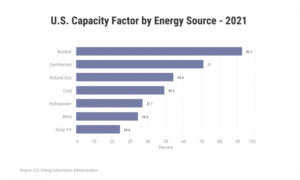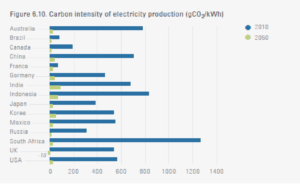About a year ago, having been persistently shocked by a series of unprecedented adverse climate change events from all parts of the world, I was increasingly drawn to the question “Are We Close to the Line of No-Return?” As heavy rains caused severe land-slides in many countries, including Australia and New Zealand, we witnessed, simultaneously, a prolonged drought, which caused many waterways to dry up, and subsequently led to the death of livestock in Somalia and other countries in the Horn of Africa. Hence the number of people who are malnourished and go to bed hungry is increasing year by year.
Record-breaking heatwaves have now become more frequent everywhere, and in western Europe for example, a high temperature of 46oC was recorded in June 2022 in southern France. The UK too recorded its highest ever temperature of 40.2o C. The scorching heatwaves, coupled with severe drought, led to intense wildfires in several countries, as well as the drying up of rivers in many parts of the world. A report from Iraq indicated that the Tigris and Euphrates are threatened to dry up by 2040. Rivers in western Europe and China are shrinking very quickly, exacerbating their already worsened economic activities.
Let’s note for example that the Rhine and Yangtze rivers in Germany and China respectively, like many other rivers, serve as (1) a source of portable water, (2) a source of water for domestic and industrial use, (3) a source for irrigation for food production, (4) waterways which help supply-chain movements including hauling large and heavy essential goods, such as stones, cement, coal, grain, oil and others (at very low cost by barges in Germany), and (5) a central role in all conventional electricity production such as HP, NP and thermal plants, based on coal, natural gas and oil.
It is expected that the shrinking level of depth of the rivers may continue for some time. Have we in fact crossed the line of no return?
Eulogizing James Lovelock
In preparation of this article, I reflected on James Lovelock, an English environmentalist, often described as an independent or futuristic scientist. He was a Green Environmentalist who vehemently supported NP as the most cost-effective option that can replace fossil fuels in the base-load power production. He was called to eternal rest exactly on his 103rd birthday on 26th of July, 2022.
Over his career, he developed and patented over 40 scientific instruments, several of them, at the request of NASA. Lovelock worked with NASA and his main duty was to analyze extraterrestrial atmospheres and planetary surfaces to know if they could support life. He found, for instance, that the Martian atmosphere could not support life, since it had just a little amount of oxygen, but overwhelmingly abundance of carbon dioxide. So he started to advocate relentlessly for NP, as the only realistic alternative to fossil fuels, saying that: “It has the capacity to both fulfil the large scale energy needs for the humankind while reducing the GHG emissions.” He also once said: “There are vast bureaucracies concerned about nuclear waste, …, but nothing comparable to deal with the truly malign problem, carbon dioxide.”
When James Lovelock was interviewed about his views about COVID-19 in 2020, he said amongst other things that: “Climate change is more dangerous to life on Earth than almost any conceivable disease.” This is definitely true, as demonstrated by the series devastating climate change events, such as the unprecedented flash floods in South and North Americas, as well as Australia, New Zealand, Sudan, Afghanistan and Pakistan – killing thousands of people, while destroying homes, livelihoods, infrastructure and farms. The intensity and frequency of such climate events have certainly increased this year – will it get worse next year?
The Industrial Revolution and the Role of Fossil Fuels
The answer for the above-given question is linked to energy, which is the corner stone for any sound economic activities, as portrayed by the current energy crisis in the world. It needs to be said also that energy is influenced by many variables, but we shall limit our discussions to energy density. It is often said that the industrial revolution actually started after Scottish scientist, James Watt, developed and patented his innovative technology, a steam engine in 1769 in the Great Britain. Steam engines, which were used for several purposes, were fuelled by coal, – indisputably the most effective energy source at that time.
Using a steam engine to power a locomotive train or a steam ship, was the catalyst which accelerated the economic activities, for such trains and ships completely out-performed horse-drawn carriages and sailing boats. For instance, based on economies of scale, a locomotive train made it possible to carry far larger amounts of goods to much longer distances in a relatively short period of time, and also at a cost far lower than that of horse-drawn carriages. Hence, people living in, say the north-eastern cities of the USA, like New York, Boston, Chicago and Detroit, could get fresh fruits and vegetables from the south into their grocery shops every morning.
After the discovery of oil in 1859, several engineers embarked on another innovative idea, which led to the development of the internal combustion engine (ICE), which was perfected around the 1900s in Germany, the USA and other counties. The ICE and diesel engines, which power cars, trucks and heavy vehicles have had significant impact on the way we live in every part of the world. In the past, only kings and queens could afford to travel in chariots drawn by horses; today many people can afford to own their own car, which is much more powerful than the combined power of several horses. The downside, however, is their profuse emission of CO2.
Steam engines were also used to generate electricity, which was more powerful than that from hydropower (HP). The awesome phenomenon of electricity, a versatile, clean and ever-ready energy that comes to life just at the flick of a switch, was used for diverse and very essential purposes in hospitals, industries and homes. In fact, electricity consumption per capita (ECPC) in a country is generally regarded as the measure of the country’s level of quality of life, also known as human development index, HDI.
A table showing the correlation between ECPC and HDI, posted on the World Bank’s website at the beginning of this millennium, showed the HDI and the ECPCs for the years 1980 and 2000 for Ghana and its former competitors Malaysia and South Korea. Their ECPC data in 1980 were 424, 631 and 859kW-h respectively, in 2000 their data were 288, 2626 and 5607kW-h respectively, which clearly show that Ghana had been left far behind by its close competitors, Malaysia and South Korea.
Since Ghana is regarded as one of a few Sub-Saharan African (SSA) countries with relatively high access to electricity, we can conclude from the above given data that SSA countries had already been left far behind from the beginning of the millennium. As such, the UN Sustainable Development Goals (SDGs) slogan “leaving no one behind” is inoperative ab initio and fails to fully convey the urgency needed to accelerate the efforts that SSA countries need to overcome poverty.
Perception of Climate Change and its Consequences
Surely, policymakers, journalists and the general public across the world are aware of climate change and its consequences, but there is no consensus on how to mitigate it. For instance, if the clean development mechanism (CDM) in the Kyoto Protocol, which included NP as a CDM project, had been adopted at the climate change meeting at the Hague in the year 2000, we would have been on an assured path for the survival of our planet.
 Fig 1 U.S. Capacity Factor by Energy Source – 2021
Fig 1 U.S. Capacity Factor by Energy Source – 2021
I was so disappointed that NP with the highest capacity factor (see Fig 1), a zero-carbon and reliable energy source, which produces affordable electricity more abundantly than any other option, was not mentioned in the descriptive narrative of the 7th goal of the UN’s Sustainable Development Goals, SDG. Without any doubt, the 7th goal on energy is the most important goal, a critical enabler for all the SDGs. In fact, there were positive results from studies on NP from very reputable sources around 2014-2015, including 2 reports on the Deep De-carbonization Pathway Projects (DDPP) in 2014 and 2015 respectively. The one in 2014 was under the auspices of Jeffrey Sachs, who among other duties, was an advisor to UN General Secretaries Kofi Anna, Ban Ki-moon and Antonio Guterres, while the one in 2015 was prepared under Teresa Ribera of Institute for Sustainable Development and International Relations (IDDRI) in France.

It is clear from Fig 2 that in 2014, France had the lowest carbon intensity in the energy sector, primarily because NP was the main source for electricity production. As a result, France is on track to achieve the optimal target as set out in the Paris Agreement. It is also a fact that the electricity pricing in the EU is lowest in France and highest in Germany. France is also a net-exporter of electricity to its neighbouring countries, including Germany, the UK and Italy.

As seen in Fig 1, CFs differ strongly from each other. In the USA, CFs range from 92.7% for NP down to 24.6% for SP. They have a very great effect on power production. It is a well-known fact that, WP and SP have been the fastest growing technologies for about three decades, but that is not reflected in Fig 3, showing electricity production from 1985 to 2021.

Perhaps, the CFs will be appreciated better with the help of Fig 4 showing installed capacities for WP and SP of 736 and 716GW respectively are much higher than 394 GW for NP, but NP produces far more electricity than WP and SP as set out in Fig 3. Moreover the intermittent electricity produced by WP and SP is not dispatchable. WP and SP require a back-up, which is usually a coal power plant.
It is evident from Fig 4 and Fig 3, showing respectively installed capacities and generated electricity from primary energy sources that, WP and SP can never replace coal and natural gas. We have to make meaningful strides to prevent an acceleration to self-destruction. Hence we need to seriously appraise our energy needs and the role NP can play in that regard.










